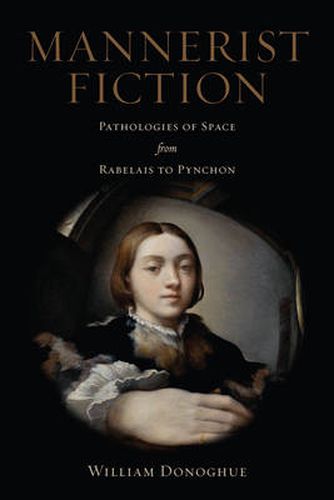Readings Newsletter
Become a Readings Member to make your shopping experience even easier.
Sign in or sign up for free!
You’re not far away from qualifying for FREE standard shipping within Australia
You’ve qualified for FREE standard shipping within Australia
The cart is loading…






In Mannerist Fiction, William Donoghue re-conceptualizes the history of formalism in western literature. Rather than presuming that literary experimentation with form - distorting space and time - began in the twentieth century with Modernism, Donoghue identifies the age of Copernicus as the crucible for the first experiments in spatial de-formation, which appeared in mannerist painting and literature. With wide-ranging erudition, Mannerist Fiction connects these literary and pictorial developments and traces their repetition and evolution over the next five hundred years.
Time and again, Donoghue explains, scientific and literary paradigm shifts have occurred in parallel. Rabelais and Jonson wrote in the aftermath of changes in the western sense of space wrought by Copernicus and the voyages of discovery, Jonathan Swift and the Marquis de Sade in the age of Newton, Thomas Pynchon in the age of Einstein. With his analysis, Donoghue establishes disfigurement and deformation as perennial sources of literary fascination.
$9.00 standard shipping within Australia
FREE standard shipping within Australia for orders over $100.00
Express & International shipping calculated at checkout
In Mannerist Fiction, William Donoghue re-conceptualizes the history of formalism in western literature. Rather than presuming that literary experimentation with form - distorting space and time - began in the twentieth century with Modernism, Donoghue identifies the age of Copernicus as the crucible for the first experiments in spatial de-formation, which appeared in mannerist painting and literature. With wide-ranging erudition, Mannerist Fiction connects these literary and pictorial developments and traces their repetition and evolution over the next five hundred years.
Time and again, Donoghue explains, scientific and literary paradigm shifts have occurred in parallel. Rabelais and Jonson wrote in the aftermath of changes in the western sense of space wrought by Copernicus and the voyages of discovery, Jonathan Swift and the Marquis de Sade in the age of Newton, Thomas Pynchon in the age of Einstein. With his analysis, Donoghue establishes disfigurement and deformation as perennial sources of literary fascination.